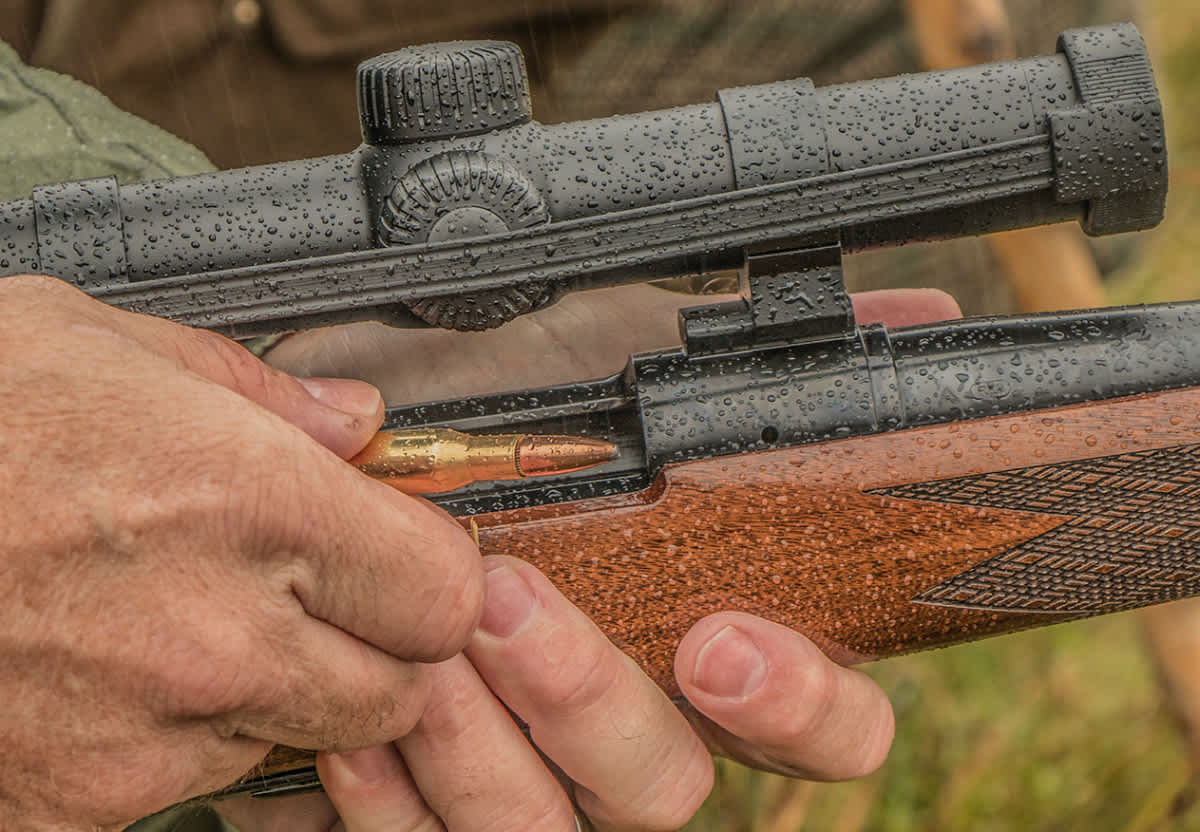Shooting with the Mann: Anatomy of a Miss
Richard Mann 10.31.16

As a hunter, you have to accept the fact that eventually you’re going to miss. There he is, the buck, bull or bruin of your desire, and he is at 100 yards, standing broadside. Can you make the shot? Should you take the shot?
The only way to know the answer to these questions is through practice. I don’t mean shooting a box of ammo from the bench; I mean practicing taking shots like those presented with when you’re hunting.
There are a number of reasons you can miss when hunting. Fortunately, I don’t miss much anymore. This might sound a bit arrogant or like I’m bragging, but what it really means is that I don’t take shots I don’t think I will make. And, as I have learned, sometimes you’re better off not taking the shot than you are if you miss.

Twigs and Such
Hunters often forget to check for a clear pathway for their bullet. You can get caught up in the excitement of the moment and develop target focus. I was hunting moose in Newfoundland and my guide had just called a bull to the edge of the timber. The bull was 60 yards away, facing us, and I was prone behind a mound of dirt. This, I thought, was a sure thing. I pulled the trigger and the bull ran away.
We found very little blood and after hours of searching. No moose. I couldn’t understand how I could have missed. We went back to the scene of the shot and walked the bullet’s path. There, I found where the bullet had clipped a small twig about 3 yards in front of the bull. A week later, another hunter took that bull and found that my bullet had just grazed him.
Moral of the story: Look for intervening brush before you pull the trigger. You may need to use more magnification to see twigs and such.

Mother Earth
Many years ago on my first pronghorn hunt, we stalked a narrow ravine to within about 200 yards of several pronghorns. They had no idea we were in the world. I eased the rifle up over the edge, my hunting partner ranged the distance, then I settled the reticle and pulled the trigger. Just like the Newfoundland moose, the pronghorn ran away, no worse for the wear.
What happened? I failed to check in front of my rifle’s barrel. A small mound of dirt about 10 feet to my front – not visible in the riflescope – deflected the bullet off to parts unknown.
Moral of the story: This is just like when someone manages to shoot a hole in the hood of their truck. You must remember the rifle’s barrel is about 2 inches below your line of sight.

Wind
It was 7 degrees below zero, and a Montana wind was howling at 30 mph. The bull elk stopped broadside at about 300 yards. I calculated I needed to hold about a foot into the wind to get the hit. I did just that, and the bull turned and ran away. He stopped again at 345 yards. Figuring I’d held too deep into the wind, I just said to heck with it and held dead on. He dropped at the shot.
As it turned out, a tall grove of trees stretched from about the 100-yard mark out to the bull, essentially negating the effects of the wind. It was blowing hard where I was, but almost not at all where he was.
Lesson learned: Don’t put too much stock in the wind where you are, instead pay attention to the wind between you and the animal.

Patience
Scotland, 3 hours till dark, and a red stag was bedded at 80 yards. My guide thought he could make the stag stand for a shot. In the process, several other red deer spooked from their beds and never stood still before running off. The target was small, but I worked into a good rested position and felt I could make the shot. I missed.
I have no idea why I missed. It was a shot I should have been able to make while standing with no support. After the miss, the guide said the hunt was over and my chance was gone. (That’s a story for another day.) However, all was not lost because experience is the best teacher.
Lesson learned: Don’t rush to take a questionable shot for fear you may not get a better one. Sometimes patience is the best defense you have against a miss.

